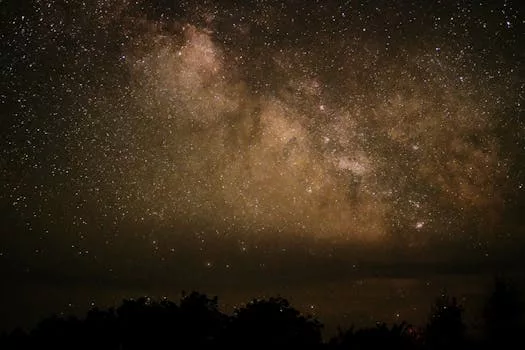
“
Beyond the Milky Way: Imagining New Worlds and Possibilities – Beyond the Milky Way: Imagining New Worlds and Possibilities
Introduction
Beyond the Milky Way: Imagining New Worlds and Possibilities has long fascinated humans, from ancient civilizations to modern-day astronomers. The idea of exploring the unknown and discovering new worlds has captivated our imagination, inspiring countless works of science fiction and driving innovation in space technology. As we continue to push the boundaries of space exploration, we begin to uncover the secrets of the universe, revealing new possibilities and challenging our understanding of the cosmos.
Section 1: The Milky Way and Beyond
The Milky Way, our home galaxy, is a spiral galaxy consisting of hundreds of billions of stars, gas, and dust. It is estimated to be around 100,000 light-years in diameter and is thought to contain between 200 and 400 billion stars. However, the Milky Way is just one of billions of galaxies in the observable universe, each with its own unique characteristics and mysteries. The Andromeda Galaxy, our closest galactic neighbor, is approaching us at a speed of around 250,000 miles per hour and is expected to collide with the Milky Way in approximately 4.5 billion years.
As we look beyond the Milky Way, we enter the realm of intergalactic space, where galaxies are separated by vast distances and the universe becomes increasingly vast and complex. The cosmic web, a network of galaxy filaments and voids, stretches across the universe, providing a framework for understanding the large-scale structure of the cosmos. For a deeper dive into this concept, check out Cosmic Creativity: How Imagination Soars Beyond the Constellations.
Section 2: New Worlds and Possibilities
The discovery of exoplanets, planets that orbit stars outside of our solar system, has opened up new possibilities for the search for life beyond Earth. With thousands of exoplanets discovered so far, the potential for finding life-supporting worlds is vast. The Kepler space telescope has revealed a staggering array of planetary systems, from small, rocky worlds to large, gas giants, each with its own unique characteristics and potential for supporting life. This exciting frontier is explored further in Galaxies of Dreams: How Imagination Transcends the Night Sky.
The search for life beyond Earth is an active area of research, with scientists using a variety of methods to detect biosignatures, signs of biological activity, in the atmospheres of exoplanets. The discovery of water on Mars, a key ingredient for life, has fueled hopes of finding life on the Red Planet, while the moons of Jupiter and Saturn, such as Europa and Enceladus, are believed to harbor subsurface oceans, potentially teeming with life.
Section 3: The Future of Space Exploration
As we continue to explore the universe, we are driven by a sense of wonder and a desire to push the boundaries of human knowledge. The next generation of space telescopes, such as the James Webb Space Telescope, will allow us to study the universe in unprecedented detail, from the formation of the first stars and galaxies to the detection of biosignatures in the atmospheres of exoplanets. To understand the impact of imagination in this journey, refer to Soaring Through the Cosmos: The Power of Imagination Beyond the Stars.
Private companies, such as SpaceX and Blue Origin, are leading the charge in space technology, developing reusable rockets and pursuing ambitious goals, such as establishing a human settlement on Mars. As we look to the future, the possibilities for space exploration are endless, from establishing a human presence on the moon and Mars to exploring the outer reaches of the solar system and beyond.
Conclusion and Takeaways
In conclusion, the universe is full of mysteries and wonders, from the majestic spiral arms of the Milky Way to the distant reaches of the cosmic web. As we continue to explore and understand the universe, we are driven by a sense of curiosity and a desire to push the boundaries of human knowledge. Some key takeaways from this article include:
- The Milky Way is just one of billions of galaxies in the observable universe.
- The discovery of exoplanets has opened up new possibilities for the search for life beyond Earth.
- The search for life beyond Earth is an active area of research, with scientists using a variety of methods to detect biosignatures.
- The future of space exploration is driven by a sense of wonder and a desire to push the boundaries of human knowledge.







